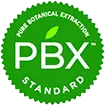Safe, Fast & Efficient Cannabis Extraction Equipment & Systems
We manufacture the best CBD & THC extraction equipment for the cannabis industry
About PURE5™ Extraction Equipment
PURE5™ is the most innovative cannabis and hemp processing & extraction equipment company. With our superior cannabis extraction equipment and unique approach to extracting botanical plant materials with minimal degradation to the natural ingredients, we have set the bar for a new level for extracting quality cannabis concentrates in the industry.
What Makes Our Extraction Equipment Superior?
We can sum up the superiority of PURE5™ devices in 3 simple words:
Safe, Fast, and Efficient. Our Extraction Systems deliver a terpene-rich oil and more strain-specific end product at a fraction of the cost compared to running Carbon Dioxide (CO2), Hydrocarbon, or Ethanol machines for cannabis oil extraction.EQUIPMENT AND PRODUCTS
PURE5™ is the most innovative botanical extraction equipment company focusing on cannabis and hemp. Our superior technology gently extracts botanicals, delivers full natural potency, and has set a new higher level of standards in the cannabis industry.
LPE Extraction Systems
View allR134a Aerosol Extraction Systems
Low Pressure (LPE) Extraction is perfect for extracting the fine oil fraction from every botanical. The extraction process is gentle to the oil and the plant material, using low pressure, room temperature, and delivers naturally potent terpene rich full-spectrum oil. It collects the complete terpene and cannabinoid profile without degradation of components. Our R134a solventless cannabis extraction equipments are:- 20 Liter MAX CBD/THC extraction machine: ideal for small-scale extraction operations
- 50 Liter CBD/THC extraction machines: ideal for small to mid-scale extraction operations
- 100 Liter CBD/THC extraction machines: ideal for mid-scale scale extraction operations
- 200 Liter systems: Ideal for medium to large commercial operations
- 500 Liter systems: For large-capacity commercial production
- 1000 Liter systems: Ideal for very-large-scale production
1500L Ethanol Extraction System
View allEthanol CBD/THC Extraction Equipment (EtOH) – 20-1000L Ethanol Extraction System
Ethanol is a universal solvent with power in resin and alkaloid extraction. We pair the R134a aerosol and EtOH extraction to extract any plant material. Our ethanol cannabis extraction system utilize a chemical process that feeds the material continuously via a conveyor into the extraction vessel and delivers a consistent output of purified oil.- 20-1000 liter EtOH extraction equipment: Get a better quality final product by eliminating undesired compounds and preserve all terpenes and cannabinoids.
- Easy evaporation results in clean and pure extract without traces of solvent
- Easy-to-use Programmable Logic Controller (PLC) and touchscreen interface
- Fully automatic with all safety features. Users can program pressure, temperature, and time.
Post Processing & Test Lab Equipment Systems
View allLab Equipment – Post Processing & Test Lab Equipment Systems
PURE5™ provides own-build, high-quality cannabis lab testing equipment, including stainless steel molecular systems for the distillation process, various sizes of vacuum industrial ovens, THC remediation equipment, stainless steel isomerization, and crystallization reactors, and gas chromatography equipment.- 50L Crystallization Reactor: Produce high-quality cannabis isolate from various plant sources with minimal impurities and no residual solvents or other unwanted compounds.
- Gas Chromatography: Quick and low-cost analyses of potency, residual solvents and terpenes and the quantification of their concentrations according to molecular weight and boiling point.
- 50L – 500L Vacuum Oven: Dry, Decas and Decarboxylate cannabis extracts and activate the cannabinoids in the extract at low temperatures and pressures, allowing for a more efficient extraction process.
- 20L-200L LPE: More efficient extraction. The lower temperatures also reduce the risk of burning off valuable compounds while allowing for more precise control over the extraction temperature and times for optimal cannabinoid potency.
THC Remediation Equipment
View allTHC Remediation Systems and Equipment
Our patented THC Remediation equipment is a first and only of its kind in the hemp industry. It uses a dynamic combination of gas, low heat, and low pressure to isomerize THC into other cannabinoids such as CBD, CBC, CBN, etc.- Fully organic remediation process uses no solvents.
- Easy-to-use, fully automated system
- DEA compliant
- 5 liter – 150 liter/day processing capacity range for small to large-scale commercial production
Cannabis Distillation Equipment
The 6" SS Wipe Film Distillation System
Tech InformationThe 6″ SS Wipe Film Distillation system
Made of 304 or 316 stainless steel and can process faster compared to its glass counterpart. This is because stainless steel has a higher heat transfer rate, resulting in more than double the processing capacity of conventional glass wipe film distillation systems.
The SS system also features a ball valve discharge system that automates the flow rate and also provides increased safety during the distillation process.
The 6" GL Wipe Film Distillation system
More about the 6"GLThe 6″ GL Wipe Film Distillation system
Made of food-grade glass can process up to 7 liters/hour and features a fully automated terpene and solvent recovery collection systems, allowing for easy collection and storage of the distillate. It also includes a unique filtration system that removes unwanted solids to ensure the highest quality product.
Main features of the PURE5™ Wipe Film Distillation Systems
- Fast and efficient distillation
- High quality and purity of the final product
- Precise temperature control
- Ease of operation with automated systems
- Safe and efficient solvent recovery
- Cost-effective solution with low maintenance requirements.
Farming Equipment
Hemp Harvester
Harvester Tech DataHemp Harvester
Our robust hemp harvester is a specialized agricultural machine for harvesting and collecting hemp plants. It combines cutting, gathering, and baling hemp plants into one process. The harvester has adjustable settings for the length and thickness of plant stems, allowing for various harvesting styles.The 10T Conveyor Dryer System
Dryer Tech Info10T Conveyor Dryer System
The dryer is composed of a heated chamber that circulates and dries the plants with warm to hot dry air, similar to a convection oven. A 22KW heat exchange furnace generates the necessary heat from 25C to 60C to dry the plants, while a control cabinet controls temperature, airflow, power, and other variables to ensure optimal drying conditions.
Stick and Seed Separation
More about the SeparatorStick and Seed Separation
Our Stick and Seed Separation system separates hemp sticks from flower and seeds for further processing. Then further separates the seeds from flower in 4 fractions.
- The food-grade stainless steel feeding conveyor moves the hemp material from the drying process to the sifter.
- The sifter uses a vibratory motion to separate the hemp sticks from the seeds that are light enough to roll down the mesh.
- They then pass through a blower cyclone system to further separate the large particles from the smaller ones.
- The control cabinet allows users to ensure optimal power, speed, and temperature as the sticks are sorted and separated.
The end result is a clean, dry batch of seeds ready for further processing or sale.
Get better, faster and lower cost results with PURE5™!
LEARN MORE ABOUT OUR SUPERIOR PRODUCTS & SERVICES. CONTACT US NOW!
The Best Way to
Extract Hemp & Cannabis.
Why Choose Our Technology Over CO2
Our CBD and THC extraction machines can provide your company with a more efficient process and better end products at a lower cost than if you were to use CO2, butane, propane, or ethanol.
PURE5™ cannabis and hemp extraction equipment uses advanced technology and a distinctive method that results in minimal degradation of the natural constituents of the botanicals.
PURE5™ has established a new higher standard in the cannabis industry.
Our CBD extraction equipment doesn’t involve high temperatures or harmful solvents that can cause chemical or thermal degradation of the material and reduce the natural plant values. PURE5™ delivers natural plant vitality in its purest form.
“PURE5’s Low-Pressure Extraction Equipment is a game-changer for the industry because it can produce higher yields than high-pressure CO2 extraction equipment in a fraction of the time while costing significantly less to buy and operate compared to CO2 THC extraction machines.”
– Chief Executive Officer, George Stantchev, PhDExtraction Tips In Your Inbox
Subscribe to receive our knowledge articles & be alerted to our new products and discounts.
You May Be Interested In Reading:
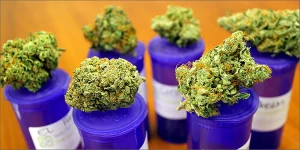
The Future of Strain-Specific Medicine
The concept of strain-specific medicine is an exciting prospect for the future of healthcare. By tailoring treatments to the specific strain of a disease, doctors

Forming Strategic Partners
Panel Discussion at ICBC 2024 Barcelona, Spain What are the needs for strategic partnerships? Relationships with other companies can help you achieve even greater success
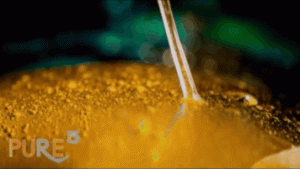
Plant Extraction with HFC-134a
Hydrofluorocarbon HFC-134a (R-134a), also known as 1,1,1,2-Tetrafluoroethane, is a commonly used compound in air conditioning and refrigeration systems. It’s a suitable replacement for older chlorinated

How do you create unique products for an elevated customer experience?
A Better Way of Applying Science in Medicine What the Customer is Looking for? Customer psychology is continually changing, mainly driven by the experience of
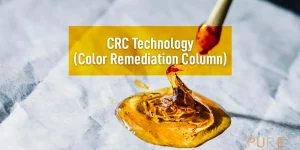
What is CRC in Cannabis Extraction?
Color Remediation Columns (CRC) in Cannabis Extraction Ever wonder how cannabis extracts are made? Well, as the cannabis industry grows, folks discover new methods, such
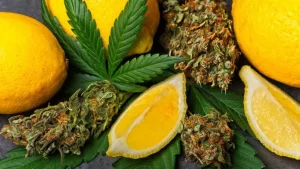
Understanding Terpenes with PURE5™ Extraction
The lesser known modulator Current hemp legalization legislation has sparked renewed interest in cannabis/hemp compounds for medicinal and recreational uses. As individuals progress in their


